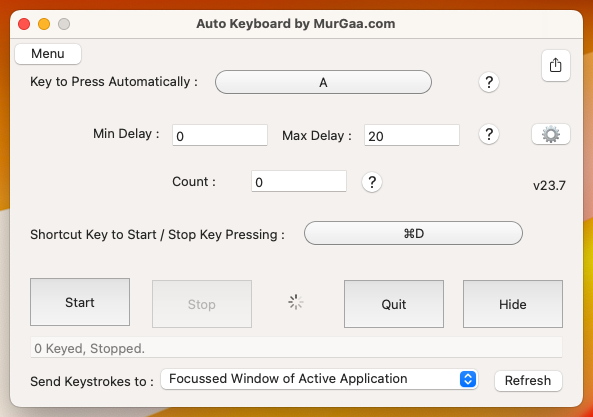Jul 22, 2011 - Don Kryak. Simply put.when the job is done, it s done right by Auto Dynamics. Win XP, keyboard, mouse, cd s, cable & manual $85 772-924-2922 FP STEEL BUILDINGS: 6 only 20x20, 25x36, 30x40, 40x54, 50x104,. Most of the functions repeated on your computer involve mouse moves and keyboard inputs. WinAutomation can extend the capabilities of your mouse and keyboard, with endless possibilities It can enhance the efficiency of your hardware by creating mouse gestures, movements and clicks, as well as perform key strokes.
• Cartmell, Kathleen B; Bonilha, Heather S; Matson, Terri; Bryant, Debbie C; Zapka, Jane G; Bentz, Tricia A; Ford, Marvella E; Hughes-Halbert, Chanita; Simpson, Kit N; Alberg, Anthony J 2016-08-15 Clinical trials (CT) represent an important treatment option for cancer patients. Unfortunately, patients face challenges to enrolling in CTs, such as logistical barriers, poor CT understanding and complex clinical regimens. Patient navigation is a strategy that may help to improve the delivery of CT education and support services. We examined the feasibility and initial effect of one navigation strategy, use of lay navigators. A lay CT navigation intervention was evaluated in a prospective cohort study among 40 lung and esophageal cancer patients. The intervention was delivered by a trained lay navigator who viewed a 17-minute CT educational video with each patient, assessed and answered their questions about CT participation and addressed reported barriers to care and trial participation. During this 12-month pilot project, 85% (95% CI: 72%-93%) of patients eligible for a therapeutic CT consented to participate in the CT navigation intervention.
Among navigated patients, CT understanding improved between pre- and post-test (means 3.54 and 4.40, respectively; p-value 0.004), and 95% (95% CI: 82%-98%) of navigated patients consented to participate in a CT. Navigated patients reported being satisfied with patient navigation services and CT participation. 

In this formative single-arm pilot project, initial evidence was found for the potential effect of a lay navigation intervention on CT understanding and enrollment. A randomized controlled trial is needed to examine the efficacy of the intervention for improving CT education and enrollment. • Lasser, Karen E; Kenst, Karey S; Quintiliani, Lisa M; Wiener, Renda Soylemez; Murillo, Jennifer; Pbert, Lori; Xuan, Ziming; Bowen, Deborah J 2013-01-01 We conducted a pilot randomized controlled trial to determine the feasibility and acceptability of a patient navigation intervention.
Forty-seven smokers from one safety-net hospital were randomized to either a control group, in which they received a smoking cessation brochure and a list of smoking cessation resources, or a navigation group, in which they received the smoking cessation brochure, a list of smoking cessation resources, and patient navigation. Follow-up data were obtained for 33 participants. Nine (47.4%) of 19 of navigation group participants had engaged in smoking cessation treatment by 3 months versus 6 (42.9%) of 14 control group participants (chi-square p = ns). Patient navigation to promote engagement in smoking cessation treatment was feasible and acceptable to participants. • Wells, Kristen J.; Battaglia, Tracy A.; Dudley, Donald J.; Garcia, Roland; Greene, Amanda; Calhoun, Elizabeth; Mandelblatt, Jeanne S.; Paskett, Electra D.; Raich, Peter C. 2008-01-01 Background First implemented in 1990, patient navigation interventions are emerging as an approach to reduce cancer disparities.
However, there is lack of consensus about how patient navigation is defined, what patient navigators do, and what their qualifications should be. Little is known about the efficacy and cost effectiveness of patient navigation. Methods We conducted a qualitative synthesis of published literature on cancer patient navigation. Using the keywords “navigator” or “navigation” and “cancer,” we identified 45 articles from Pubmed and reference searches that were published or in press through October 2007. 16 provided data on efficacy of navigation in improving timeliness and receipt of cancer screening, diagnostic follow-up care, and treatment. Patient navigation services are defined and differentiated from other outreach services.